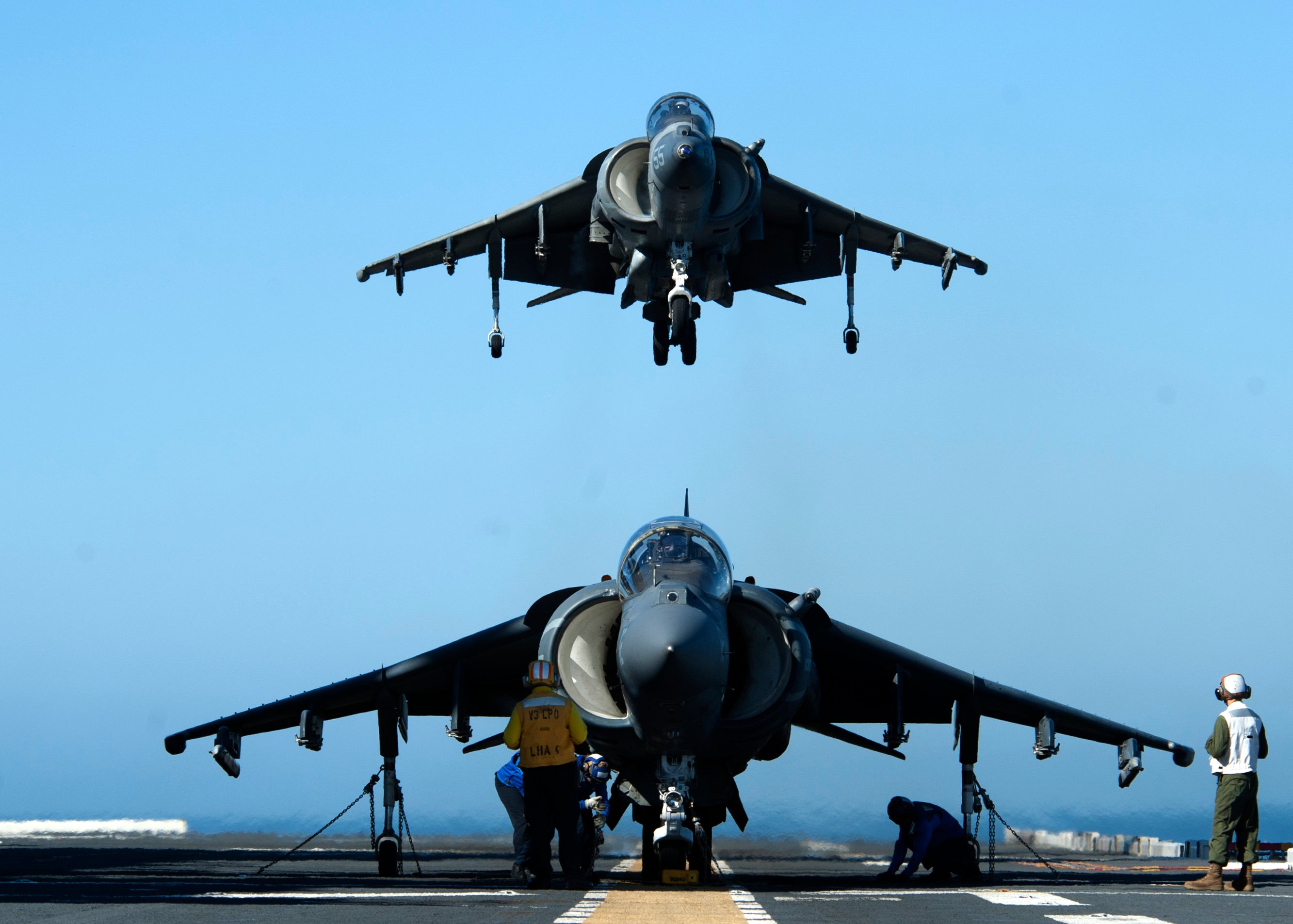
The Pentagon has asked for an additional $7.5 million in the current fiscal year for the Marine Corps to get started on installing the Link 16 communication system on its fleet of Boeing AV-8B Harriers.
In a reprogramming request to Congress, the Defense Department wrote that “funding is required to begin Link 16 Tactical Datalink integration into the AV-8B aircraft for relevancy, safety improvements, and interoperability. Connection to the Link 16 network is vital to the ability of AV-8B aircraft to operate within command and control structures and operational plans, as well as providing the tactical capability for more effective and safe prosecution of both airborne and ground targets. Without Link 16, the AV-8B aircraft will not have access to the Common Operating Picture and will operate at a significant disadvantage limiting the joint capability of the Marine Air/Ground Task Force.”
This integration effort would cost $71.5 million from this current year, Fiscal Year 2015, through 2021. The program is included in the budget request currently on the Hill for FY 2016, but the reprogramming, if approved, would help get started sooner.
Marine Corps spokesman Maj. Paul Greenberg told USNI News that the effort to upgrade the Harriers will help keep the aircraft relevant until the platform is retired in 2025.
“The Harrier currently has UHF and VHF radios, and one-way datalink for Litening Targeting Pod video, which can be received by ground stations,” he said in a statement.
“The range is limited. Link 16 will significantly improve the communication capabilities of the AV-8B. It provides a two-way continuous data network that allows for sharing of own-ship and other participant location information. Additionally, it allows for immediate sharing of targeting information.”
With Link 16, the Harriers will be brought into a joint, combined and international communications environment – allowing the jets to talk to every other tactical aviation aircraft in the DoD inventory, the Navy’s amphibious ships and aircraft carriers, and some ships and aircraft from Japan and several NATO allies.
Though the Marines are phasing in the Lockheed Martin F-35B Lighting II Joint Strike Fighter, which will eventually replace the Harrier, Greenberg said the Harrier fleet will remain operational until 2025.
“We intend to extract maximum value and service life out of both our Harriers and Hornets,” he said.
“Link 16 is a worthy investment because the AV-8B plays a key role in operational sourcing for the United States Marine Corps, through the end of its operational service date. AV-8B must be able to operate in a joint combat environment, including during major combat operations. Link 16 plays a key role in ensuring proper and timely identification of friend or foe, and it dramatically reduces time required to dynamically task airborne aircraft with targeting information.”
The integration plan is still being developed, he said, but it should take about 12 months, from 2017 to 2018, to modify 66 aircraft, with each plane being out of service for about a month while undergoing the modifications. All 66 of the planes will come from the service’s AV-8B II+ Radar fleet, whereas none of the AV-8B II Night Attack planes without the APG-65 radar will get the Link 16 upgrade.





